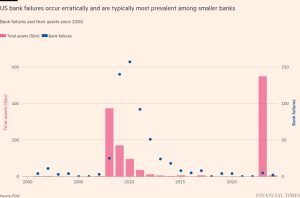The market reaction to global tensions might not follow the old script
Unlock the Editor’s Digest for free
Roula Khalaf, Editor of the FT, selects her favourite stories in this weekly newsletter.
The good vibes washing around global markets are proving to be very hard to shift. Overnight, the festering conflict in the Middle East went very clearly from bad to worse. Iran fired a barrage of missiles towards Israel — precisely the kind of escalation that investors say they have been fretting about for months — and still the reaction across markets has been nervy, but muted.
Stocks in Europe and Asia edged down a little but largely held their ground in the morning after the attacks. Oil prices picked up, but only enough to take the price of Brent crude to $75 or so a barrel — the highest in around a week. Gold prices, already sitting pretty after near 30 per cent gains this year, failed to hit a new record. And the dollar — typically one of the go-to bets in times of geopolitical strife — carved out unremarkable gains, adding about 1 per cent against both the euro and a basket of major currencies this week.
“It’s a bit scary when you see the involvement of Iran,” said Björn Jesch, chief investment officer at German asset manager DWS. “But it was more or less the same reaction as the last time they sent missiles. The question is the involvement of the US.”
This is the wild card, of course, and few money managers would claim to possess sufficient insight on that point to shift portfolios around with any confidence about what the next step might be.
We may end up looking back on this reaction as a moment of outlandish complacency or else one of sensible calm. For now, though, Jesch says he would not describe this as a clear period of “risk off” — market parlance for “run to the hills”.
All of this tells us a lot about the supportive power of US monetary policy and also a fair amount about the shifting ways in which markets respond to bad news.
On the first point, slick messaging from the Federal Reserve continues to reverberate across global asset prices. The US central bank cut interest rates by an unusually large amount — half a percentage point — two weeks ago, but clearly succeeded in convincing investors it did this because it can, not because it is running scared of a recession. This combination of rapidly easing monetary policy and continuing resilience in the US economy pushes risky assets into the sweetest of sweet spots. Investors may still be a little optimistic about how many US rate cuts are to come in the coming year or so, but the collective judgment of market participants is that none of the news on Israel in recent days is grim enough, in cold macroeconomic terms, to overturn the exuberance.
On the margins, last week’s multipronged stimulus effort by Chinese authorities, immediately before a series of market holidays, is also helping the mood.
In the mix here, though, it seems market shocks are not quite what they used to be, in particular in relation to the dollar, which generally sails higher in the event of doom and disaster.
War, pestilence, recession, financial shocks — and all the other bad stuff in between — have historically been pretty consistent triggers for the buck to jump against almost all other currencies, whether they are from developed or emerging economies. Sometimes this takes extreme forms — a ferocious ascent in the dollar was one of the defining features of the shock to markets from the outbreak of Covid nearly five years ago.
Now, though, swap lines agreed by various central banks to smooth the global flow of dollars in moments of distress help to dull the impact of shocks. And crucially, US rates have towered over much of the rest of the developed world for the past two years or so, sucking in global funds and encouraging companies around the world to hold on to dollar revenues at a highly unusual scale. This alters the way the dollar responds to fear and greed. Examples are already popping up. In the summer, for instance, a violent sell-off in stocks coincided with a fall, not a rise, in the dollar.
In the past, fear was a consistent trigger for investors and other market participants to hoard dollars, and it is still hard to imagine that fully fading away. But speculative dollar holdings built up since Covid are more likely to be offloaded than built up further in a shock now.
In the current point of market tension around Israel and Iran, the modest pick-up in the dollar is largely in line with other asset classes. If matters deteriorate further, though, do not expect it necessarily to stick to the old script.
#market #reaction #global #tensions #follow #script




